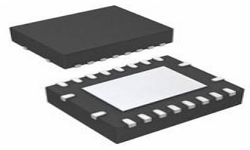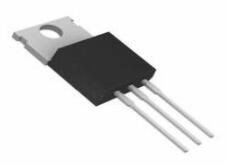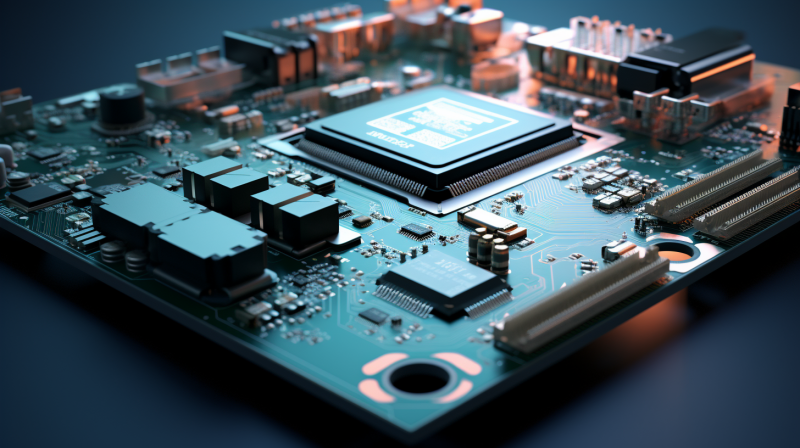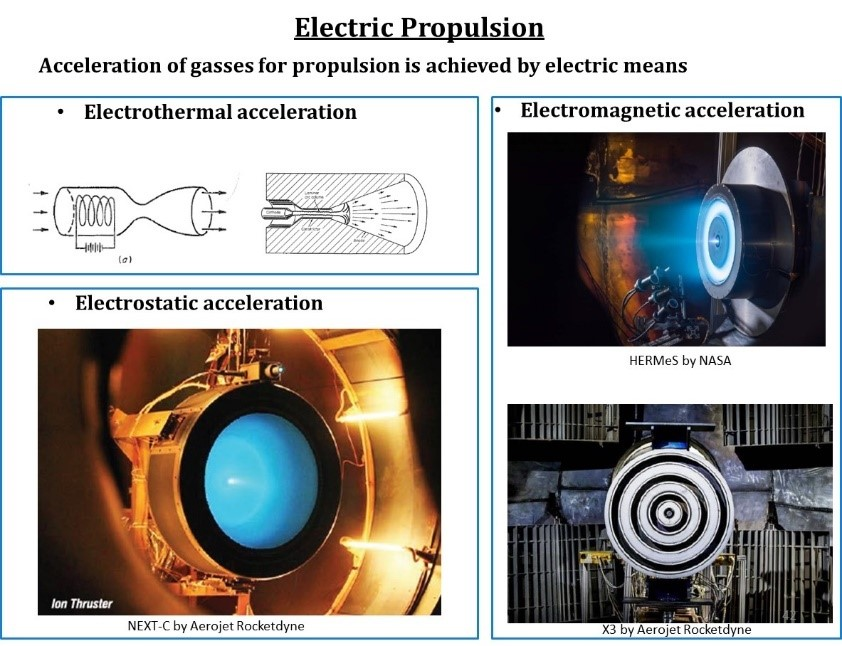A Comprehensive Guide to the 5962-8770203RX Digital to Analog Converter (DAC)
DAC Current - Unbuffered Through Hole R-2R R 1.5 B B
Unit Price: $161.232549
Ext Price: $161.23









DAC Current - Unbuffered Through Hole R-2R R 1.5 B B
In this article, we will explore the features, applications, reference designs, alternative parts, and frequently asked questions about the 5962-8770203RX Digital to Analog Converter (DAC) from Analog Devices Inc. We will delve into its specifications, benefits, and potential use cases, providing a comprehensive overview for electronic engineers and enthusiasts.
Product Introduction
1. Description:
The 5962-8770203RX is a high-performance Digital to Analog Converter (DAC) designed by Analog Devices Inc. It is a 12-bit DAC with a resolution of 1.5 B and operates with a supply voltage range of 5V to 15V. The DAC utilizes an R-2R architecture and features an external reference type, making it versatile for various applications. With a settling time of 2μs and excellent linearity and integral nonlinearity performance, this DAC delivers accurate and reliable analog output signals.
2. Features:
- 12-bit resolution: The 5962-8770203RX offers a high level of precision with its 12-bit resolution, allowing for fine-grained control over analog output signals.
- Wide supply voltage range: With a supply voltage range of 5V to 15V, this DAC can be easily integrated into different power systems.
- Fast settling time: The DAC's settling time of 2μs ensures quick and responsive analog output generation, ideal for time-critical applications.
- Excellent linearity and integral nonlinearity performance: The DAC exhibits a linearity error of maximum 0.0488% and an integral nonlinearity of maximum 0.5 LSB, ensuring accurate and reliable analog output.
3. Applications:
The 5962-8770203RX DAC finds applications in various industries and electronic systems. Here are some primary and secondary applications:
Primary Applications:
- Industrial automation: The DAC can be used for precise control of analog signals in industrial automation systems, such as motor control, process control, and instrumentation.
- Audio equipment: It can be incorporated into audio devices, such as audio mixers, amplifiers, and professional audio systems, to convert digital audio signals into analog signals for output.
- Test and measurement equipment: The DAC's high precision and fast settling time make it suitable for test and measurement applications, including signal generators, waveform synthesizers, and data acquisition systems.
Secondary Applications:
- Automotive electronics: The DAC can be utilized in automotive applications, such as electronic control units (ECUs), infotainment systems, and automotive audio systems.
- Telecommunications: It can be integrated into telecommunications equipment, including base stations, signal processing units, and network analyzers.
- Medical devices: The DAC can find applications in medical devices like patient monitoring systems, diagnostic equipment, and medical imaging systems.
Applicable Specific Modules:
- ADSP-21489 EZ-Board: This module is designed for audio processing applications and can be used with the 5962-8770203RX DAC to achieve high-quality audio output.
4. Reference Designs:
Analog Devices Inc. provides several reference designs that utilize the 5962-8770203RX DAC. These reference designs serve as valuable resources for engineers looking to implement the DAC in their projects. Some notable reference designs include:
- AD7545 Evaluation Board: This evaluation board showcases the features and performance of the 5962-8770203RX DAC, providing a comprehensive platform for testing and evaluation.
5. Alternative Parts:
While the 5962-8770203RX DAC offers excellent performance, there may be instances where an alternative part is required. Some alternative parts to consider include:
- AD7541: This 12-bit DAC from Analog Devices Inc. offers similar features and performance as the 5962-8770203RX but with a different package and pin count.
- MAX521: This 12-bit DAC from Maxim Integrated provides a different architecture and interface options, offering flexibility for specific design requirements.
6. FAQs:
Q1: Is the 5962-8770203RX DAC RoHS compliant?
A1: No, the 5962-8770203RX DAC is not RoHS compliant and contains lead.
Q2: What is the typical lead time for the 5962-8770203RX DAC?
A2: The typical lead time for this DAC is 10 weeks.
Q3: Can the 5962-8770203RX DAC operate at extended temperature ranges?
A3: Yes, the DAC has an operating temperature range of -55°C to 125°C, making it suitable for harsh environments.
Q4: Does the 5962-8770203RX DAC require an external reference?
A4: Yes, this DAC utilizes an external reference for accurate analog output generation.
Q5: Can the 5962-8770203RX DAC be used in automotive applications?
A5: Yes, the DAC is suitable for automotive applications and can be integrated into automotive electronic systems.
Specifications
- TypeParameter
- Lifecycle Status
Lifecycle Status refers to the current stage of an electronic component in its product life cycle, indicating whether it is active, obsolete, or transitioning between these states. An active status means the component is in production and available for purchase. An obsolete status indicates that the component is no longer being manufactured or supported, and manufacturers typically provide a limited time frame for support. Understanding the lifecycle status is crucial for design engineers to ensure continuity and reliability in their projects.
PRODUCTION (Last Updated: 6 days ago) - Factory Lead Time10 Weeks
- Contact Plating
Contact plating (finish) provides corrosion protection for base metals and optimizes the mechanical and electrical properties of the contact interfaces.
Lead, Tin - Mount
In electronic components, the term "Mount" typically refers to the method or process of physically attaching or fixing a component onto a circuit board or other electronic device. This can involve soldering, adhesive bonding, or other techniques to secure the component in place. The mounting process is crucial for ensuring proper electrical connections and mechanical stability within the electronic system. Different components may have specific mounting requirements based on their size, shape, and function, and manufacturers provide guidelines for proper mounting procedures to ensure optimal performance and reliability of the electronic device.
Through Hole - Mounting Type
The "Mounting Type" in electronic components refers to the method used to attach or connect a component to a circuit board or other substrate, such as through-hole, surface-mount, or panel mount.
Through Hole - Package / Case
refers to the protective housing that encases an electronic component, providing mechanical support, electrical connections, and thermal management.
20-CDIP (0.300, 7.62mm) - Number of Pins20
- Operating Temperature
The operating temperature is the range of ambient temperature within which a power supply, or any other electrical equipment, operate in. This ranges from a minimum operating temperature, to a peak or maximum operating temperature, outside which, the power supply may fail.
-55°C~125°C - JESD-609 Code
The "JESD-609 Code" in electronic components refers to a standardized marking code that indicates the lead-free solder composition and finish of electronic components for compliance with environmental regulations.
e0 - Pbfree Code
The "Pbfree Code" parameter in electronic components refers to the code or marking used to indicate that the component is lead-free. Lead (Pb) is a toxic substance that has been widely used in electronic components for many years, but due to environmental concerns, there has been a shift towards lead-free alternatives. The Pbfree Code helps manufacturers and users easily identify components that do not contain lead, ensuring compliance with regulations and promoting environmentally friendly practices. It is important to pay attention to the Pbfree Code when selecting electronic components to ensure they meet the necessary requirements for lead-free applications.
no - Part Status
Parts can have many statuses as they progress through the configuration, analysis, review, and approval stages.
Active - Moisture Sensitivity Level (MSL)
Moisture Sensitivity Level (MSL) is a standardized rating that indicates the susceptibility of electronic components, particularly semiconductors, to moisture-induced damage during storage and the soldering process, defining the allowable exposure time to ambient conditions before they require special handling or baking to prevent failures
1 (Unlimited) - Number of Terminations20
- Terminal Finish
Terminal Finish refers to the surface treatment applied to the terminals or leads of electronic components to enhance their performance and longevity. It can improve solderability, corrosion resistance, and overall reliability of the connection in electronic assemblies. Common finishes include nickel, gold, and tin, each possessing distinct properties suitable for various applications. The choice of terminal finish can significantly impact the durability and effectiveness of electronic devices.
Tin/Lead (Sn/Pb) - Terminal Position
In electronic components, the term "Terminal Position" refers to the physical location of the connection points on the component where external electrical connections can be made. These connection points, known as terminals, are typically used to attach wires, leads, or other components to the main body of the electronic component. The terminal position is important for ensuring proper connectivity and functionality of the component within a circuit. It is often specified in technical datasheets or component specifications to help designers and engineers understand how to properly integrate the component into their circuit designs.
DUAL - Peak Reflow Temperature (Cel)
Peak Reflow Temperature (Cel) is a parameter that specifies the maximum temperature at which an electronic component can be exposed during the reflow soldering process. Reflow soldering is a common method used to attach electronic components to a circuit board. The Peak Reflow Temperature is crucial because it ensures that the component is not damaged or degraded during the soldering process. Exceeding the specified Peak Reflow Temperature can lead to issues such as component failure, reduced performance, or even permanent damage to the component. It is important for manufacturers and assemblers to adhere to the recommended Peak Reflow Temperature to ensure the reliability and functionality of the electronic components.
225 - Number of Functions1
- Supply Voltage
Supply voltage refers to the electrical potential difference provided to an electronic component or circuit. It is crucial for the proper operation of devices, as it powers their functions and determines performance characteristics. The supply voltage must be within specified limits to ensure reliability and prevent damage to components. Different electronic devices have specific supply voltage requirements, which can vary widely depending on their design and intended application.
5V - Time@Peak Reflow Temperature-Max (s)
Time@Peak Reflow Temperature-Max (s) refers to the maximum duration that an electronic component can be exposed to the peak reflow temperature during the soldering process, which is crucial for ensuring reliable solder joint formation without damaging the component.
30 - Base Part Number
The "Base Part Number" (BPN) in electronic components serves a similar purpose to the "Base Product Number." It refers to the primary identifier for a component that captures the essential characteristics shared by a group of similar components. The BPN provides a fundamental way to reference a family or series of components without specifying all the variations and specific details.
AD7545 - Pin Count
a count of all of the component leads (or pins)
20 - Qualification Status
An indicator of formal certification of qualifications.
Qualified - Output Type
The "Output Type" parameter in electronic components refers to the type of signal or data that is produced by the component as an output. This parameter specifies the nature of the output signal, such as analog or digital, and can also include details about the voltage levels, current levels, frequency, and other characteristics of the output signal. Understanding the output type of a component is crucial for ensuring compatibility with other components in a circuit or system, as well as for determining how the output signal can be utilized or processed further. In summary, the output type parameter provides essential information about the nature of the signal that is generated by the electronic component as its output.
Current - Unbuffered - Max Supply Voltage
In general, the absolute maximum common-mode voltage is VEE-0.3V and VCC+0.3V, but for products without a protection element at the VCC side, voltages up to the absolute maximum rated supply voltage (i.e. VEE+36V) can be supplied, regardless of supply voltage.
15V - Min Supply Voltage
The minimum supply voltage (V min ) is explored for sequential logic circuits by statistically simulating the impact of within-die process variations and gate-dielectric soft breakdown on data retention and hold time.
5V - Number of Bits12
- Architecture
In electronic components, the parameter "Architecture" refers to the overall design and structure of the component. It encompasses the arrangement of internal components, the layout of circuitry, and the physical form of the component. The architecture of an electronic component plays a crucial role in determining its functionality, performance, and compatibility with other components in a system. Different architectures can result in variations in power consumption, speed, size, and other key characteristics of the component. Designers often consider the architecture of electronic components carefully to ensure optimal performance and integration within a larger system.
R-2R - Converter Type
The parameter "Converter Type" in electronic components refers to the classification of devices that convert one form of energy or signal to another. This includes devices such as analog-to-digital converters (ADCs), digital-to-analog converters (DACs), and various types of signal converters used in communication, power management, and measurement systems. Each converter type is designed to facilitate the manipulation or transformation of signals to meet specific application requirements. The choice of converter type typically depends on factors such as the signal characteristics, required accuracy, and conversion speed.
D/A CONVERTER - Reference Type
a code object that is not stored directly where it is created, but that acts as a kind of pointer to a value stored elsewhere.
External - Data Interface
A Data Interface in EDQ is a template of a set of attributes representing a given entity, used to create processes that read from, or write to, interfaces rather than directly from or to sources or targets of data.
Parallel - Differential Output
a differential output voltage in electronics is the difference between the values of two AC voltages, 180° out of phase, present at the output terminals of an amplifier when you apply a differential input voltage to the input terminals of an amplifier.
No - Resolution
Resolution in electronic components refers to the smallest increment of measurement or change that can be detected or represented by the component. It is a crucial specification in devices such as sensors, displays, and converters, as it determines the level of detail or accuracy that can be achieved. For example, in a digital camera, resolution refers to the number of pixels that make up an image, with higher resolution indicating a greater level of detail. In analog-to-digital converters, resolution is the number of discrete values that can be represented in the digital output, determining the precision of the conversion process. Overall, resolution plays a significant role in determining the performance and capabilities of electronic components in various applications.
1.5 B - Voltage - Supply, Analog
Voltage - Supply, Analog is a parameter in electronic components that specifies the range of voltage levels required to power the analog circuitry within the component. This parameter indicates the minimum and maximum voltage levels that the component can accept for proper operation of its analog functions. It is crucial to ensure that the voltage supplied to the component falls within this specified range to prevent damage and ensure optimal performance. Understanding and adhering to the "Voltage - Supply, Analog" parameter is essential for the proper functioning of analog circuits in electronic components.
5V~15V - Voltage - Supply, Digital
Voltage - Supply, Digital is a parameter that specifies the voltage level required to power the digital circuitry within an electronic component, such as an integrated circuit or a microcontroller. This parameter is crucial for ensuring proper operation of the digital components, as supplying the correct voltage level is essential for reliable performance. The specified voltage range typically includes both minimum and maximum values within which the component can operate safely and efficiently. It is important to adhere to the recommended voltage supply range to prevent damage to the component and to maintain the integrity of the digital signals being processed.
5V~15V - Settling Time
In control theory the settling time of a dynamical system such as an amplifier or other output device is the time elapsed from the application of an ideal instantaneous step input to the time at which the amplifier output has entered and remained within a specified error band.
2μs - Linearity Error-Max (EL)
Linearity Error-Max (EL) is a parameter used to quantify the deviation of a device's output from a straight line response over its specified input range. It measures the maximum difference between the ideal output and the actual output of the component when subjected to varying input levels. A smaller linearity error indicates better performance, as it signifies more accurate and consistent output behavior across the input spectrum. This parameter is critical in applications requiring precision, such as analog-to-digital converters and other signal processing components.
0.0488% - Integral Nonlinearity (INL)
Integral Nonlinearity (INL) is a measure of the deviation of a transfer function from a straight line when considering the entire output range of a device, such as a digital-to-analog converter or an analog-to-digital converter. It is quantified as the maximum deviation of the actual output from the ideal output across the entire input range, expressed as a percentage of the full-scale output. INL indicates how closely the output follows a linear model, influencing the accuracy of the signal representation in electronic components. A lower INL value signifies better linearity and higher precision in signal processing applications.
0.5 LSB - Input Bit Code
"Input Bit Code" is a parameter used in electronic components, particularly in digital devices such as microcontrollers and integrated circuits. It refers to the binary code or sequence of bits that are used to represent input data or commands to the component. The input bit code is typically specified by the manufacturer and is used to configure the behavior or functionality of the component.In simpler terms, the input bit code is like a set of instructions that the electronic component understands and acts upon accordingly. By providing the correct input bit code, users can control the operation of the component and make it perform specific tasks or functions. Understanding and correctly using the input bit code is essential for proper operation and integration of electronic components in various electronic systems and applications.
BINARY - INL/DNL (LSB)
INL (Integral Non-Linearity) and DNL (Differential Non-Linearity) are parameters used to quantify the accuracy and performance of analog-to-digital converters (ADCs) and digital-to-analog converters (DACs). INL refers to the maximum deviation of the actual transfer function of a converter from a perfect straight line, representing the overall accuracy of the converter. DNL measures the difference between the actual step size of the output and the ideal step size, indicating the uniformity of the quantization levels. Both parameters are expressed in least significant bits (LSB), providing a standardized measure of the errors relative to the converter's resolution.
±2 (Max), ±4 (Max) - Number of DAC Channels
A DAC is a device that converts a digital, typically binary, code to an analog signal, such as a current, voltage, or electric charge. One DAC converter can have several channels. Each channel can sample an analog output from numerical values that are converted to output voltages.
1 - RoHS Status
RoHS means “Restriction of Certain Hazardous Substances” in the “Hazardous Substances Directive” in electrical and electronic equipment.
Non-RoHS Compliant - Lead Free
Lead Free is a term used to describe electronic components that do not contain lead as part of their composition. Lead is a toxic material that can have harmful effects on human health and the environment, so the electronics industry has been moving towards lead-free components to reduce these risks. Lead-free components are typically made using alternative materials such as silver, copper, and tin. Manufacturers must comply with regulations such as the Restriction of Hazardous Substances (RoHS) directive to ensure that their products are lead-free and environmentally friendly.
Contains Lead
Parts with Similar Specs
- ImagePart NumberManufacturerPackage / CaseNumber of PinsNumber of BitsSettling TimeIntegral Nonlinearity (INL)Number of DAC ChannelsMin Supply VoltageSupply VoltageView Compare
5962-8770203RX
20-CDIP (0.300, 7.62mm)
20
12
2μs
0.5 LSB
1
5 V
5 V
20-CDIP (0.300, 7.62mm)
20
12
2μs
0.5 LSB
-
5 V
5 V
20-CDIP (0.300, 7.62mm)
20
12
2μs
0.5 LSB
-
5 V
5 V
20-CDIP (0.300, 7.62mm)
20
12
1.5μs (Typ)
0.5 LSB
1
4.75 V
5 V
Datasheet PDF
- Datasheets :
- PCN Assembly/Origin :
- ConflictMineralStatement :
 STM32F429ZIT6 Microcontroller: 180MHz,144-LQFP, Pinout and Features
STM32F429ZIT6 Microcontroller: 180MHz,144-LQFP, Pinout and Features12 February 20223308
 TXS0108ERGYR Translators: Features, Applications and Datasheet
TXS0108ERGYR Translators: Features, Applications and Datasheet19 December 2023466
 MJE2955T PNP Transistor: Pinout, Datasheet, Uses
MJE2955T PNP Transistor: Pinout, Datasheet, Uses21 April 20225207
 PL133-47 Fanout Buffer IC: Pinout, Equivalent and Datasheet
PL133-47 Fanout Buffer IC: Pinout, Equivalent and Datasheet09 April 2022234
 Exploring the Microchip PIC18F66J50 Microcontroller: A Comprehensive Technical Analysis
Exploring the Microchip PIC18F66J50 Microcontroller: A Comprehensive Technical Analysis29 February 202484
 How to use ATTINY85 Microcontroller?
How to use ATTINY85 Microcontroller?08 April 20222779
![STA8088EXG RF RX GALILEO 1.575GHZ 169TFBGA[FAQ]: Datasheet, Block Diagram, and Features](https://res.utmel.com/Images/Article/3fe63125-18b6-441c-8483-4490b58e8e35.jpg) STA8088EXG RF RX GALILEO 1.575GHZ 169TFBGA[FAQ]: Datasheet, Block Diagram, and Features
STA8088EXG RF RX GALILEO 1.575GHZ 169TFBGA[FAQ]: Datasheet, Block Diagram, and Features14 March 2022601
 How to Use STM32F427VIT6 for Complex Applications
How to Use STM32F427VIT6 for Complex Applications24 July 2025176
 The Ultimate Guide to Maintaining Your L1154 Battery
The Ultimate Guide to Maintaining Your L1154 Battery16 June 2025479
 China to Inject $40 Billion into Semiconductor Sector with New State Fund
China to Inject $40 Billion into Semiconductor Sector with New State Fund07 September 20232642
 How much do you know about HDMI Cable?
How much do you know about HDMI Cable?28 October 20213180
 Shunt Resistors in Automotive and Power Electronics: A Comprehensive Guide to Selection and Applications
Shunt Resistors in Automotive and Power Electronics: A Comprehensive Guide to Selection and Applications04 August 20252642
 Six Sensor Principles
Six Sensor Principles18 December 2021873
 The Role of SiC in Extended Space Missions
The Role of SiC in Extended Space Missions20 September 20241992
 What is an Accelerometer Sensor?
What is an Accelerometer Sensor?20 April 202111652
 What is Inertial Measurement Unit (IMU)?
What is Inertial Measurement Unit (IMU)?15 October 20256748
Analog Devices Inc.
In Stock: 2076
Minimum: 1 Multiples: 1
Qty
Unit Price
Ext Price
1
$161.232549
$161.23
10
$152.106178
$1,521.06
100
$143.496395
$14,349.64
500
$135.373957
$67,686.98
1000
$127.711280
$127,711.28
Not the price you want? Send RFQ Now and we'll contact you ASAP.
Inquire for More Quantity











